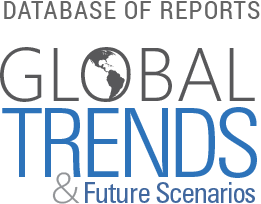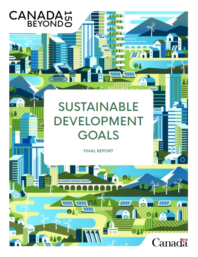
Sustainable Development Goals

Canada Beyond 150 Summary:
Consider Canada’s record on implementing the United Nations’ Sustainable Development Goals (SDGs) under the 2030 Agenda. According to the non-profit foundation Bertelsmann Stiftung, Canada currently ranks 11th out of 34 OECD countries on the United Nations’ Sustainable Development Goals Index. While it ranks highly on several indicators, Canada is weak on greenhouse gas emissions, carbon dioxide emissions from energy production, primary energy intensity, and domestic material consumption, at 29.2 tons per capita in 2015. Meeting Canada’s commitments in these areas will take significant breakthroughs.
Imagine how Canada could look in 2030 if we made more focused efforts toward Canada’s commitments under the United Nations’ Sustainable Development Goals. Capitalism could drive the world towards a low carbon economy. Consumer expectations and demand for transparency could incite corporations to shift their focus to sustainable products and practices. The sharing economy could be on the rise, causing a marked decrease in consumerism and national carbon footprints.
This is just one scenario imagined by the SDGs team of the Canada Beyond 150 (CB150) project. Developing these scenarios required the team to consider many questions: What are commonly held assumptions about sustainable development over the next 5-10 years? Which low-probability, high-impact events could shape our future? And what is the federal government’s role in guiding sustainable development in Canada? The team had one task: propose a policy intervention that the federal government could adopt to help Canada meet its SDGs commitments.
Our proposed intervention? The Government of Canada should revisit the concept of ecolabelling by adopting a framework with a sustainability grade structure. This would help consumers quickly make informed decisions about goods based on their environmental impact, help improve the sustainability footprint of supply chain actors, and strengthen public policies on the implementation of the SDGs over the long term. Grade classification would be based on a points system, where points are earned by meeting sustainability criteria, and would apply to all products. Producers would collect sustainable data by using emerging technologies like blockchain, sensors, the Internet of Things, smart meters, and artificial intelligence.
Our proposed intervention could be one of those breakthroughs. It could use Canadian technological expertise, particularly in life cycle tracking, to align with the Government of Canada’s Clean Growth goals. Its $1 billion investment in strategic investments would support the clean technology sector through the Innovation and Skills Plan. The proposed intervention could help place Canada as a global SDGs leader.
- Issues:
- Climate Change, Economics, Natural Resources, Technological innovation
- Region:
- North America
- Country:
- Canada
- Year Published:
- 2019
- Authors:
- Michele Charles, Pierre-Olivier DesMarchais, Laura Way, Étienne Lepage, Reshmeena Lalani, Mathew Klie-Cribb, Michael Kelly, Eiad El Fateh, Roxanne Côté-Bigras, Louise Chien, Frank Assu
- Institutions:
- Canada Beyond 150, Government of Canada

